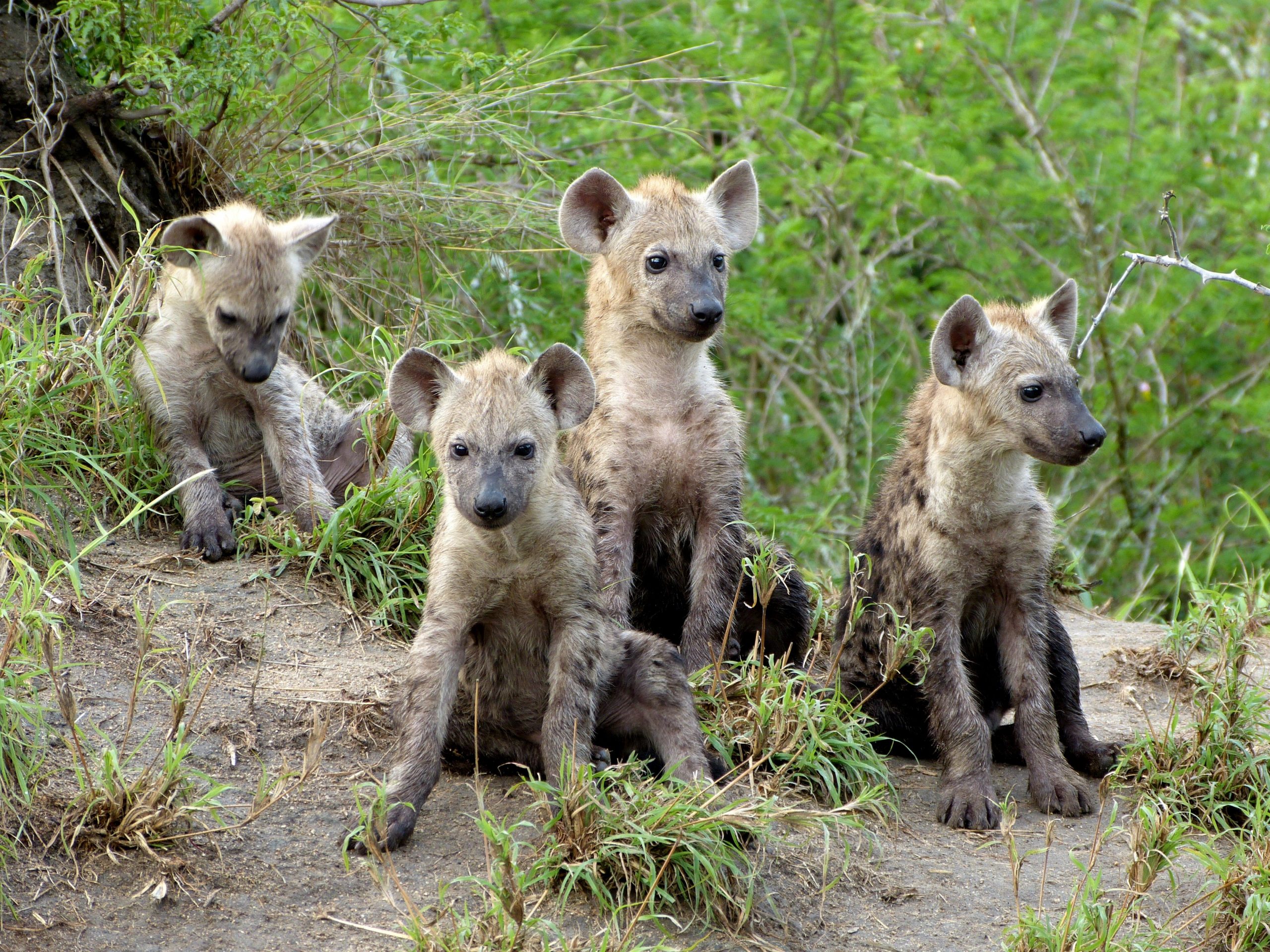Hyenas Among Humans

Increasingly, animals have to share their space with human activities and infrastructure, even in protected nature reserves. Although human activity can often disturb animal populations, it can also be a source of reliable, easy-to-access resources.
Some species, such as coyotes in the United States, successfully take advantage of human resources. Humans can supply resources directly, primarily through garbage that wild animals can scavenge, or they can influence the relative availability of native resources, like prey animals.
Spotted hyenas live in social groups known as clans dominated by a female matriarch and characterized by a strict social hierarchy. Even in protected nature reserves, hyenas are impacted by human activity and infrastructure. However, the extent to which human activity influences the social interactions of hyenas is not well-understood.
In a new study, Lydia Belton (University of Pretoria), Elissa Cameron (University of Canterbury), and Fredrik Dalerum (University of Pretoria, Stockholm University, and University of Oviedo) evaluated the social networks of four different hyena clans in the Kruger National Park, South Africa.

“We used various ways of quantifying the connectedness of individuals within the social groups,” says Dalerum. “We were interested to see if the different social positions of animals, determined by age, sex, and social rank, would be influenced by the amount of human activity and infrastructure experienced by the different clans.”
The researchers found that the hyena clan experiencing the highest human activity had a less dense social network than other clans, indicating that hyenas in this clan interacted less with group members. Conversely, the researchers also found that that the hyena clan in the area with the least amount of human activity and infrastructure had the most closely associated individuals. The results suggest that human activity may have weakened social cohesiveness within hyena clans.
“If a clan is less cohesive, it could be more sensitive to any kind of further disturbance, such as poaching or predation by other predators, like big cats,” says Dalerum. “A less socially connected clan could be more sensitive to these kinds of external pressures.”

However, the researchers did not find strong differences between the clans in the relative roles of individuals of different age, rank, and sex. This suggests that while human activity may have impacted the overall cohesiveness of the clans, the relative association patterns among group members within the clans may be resilient to external perturbations.
“Now that we have quantified some of these patterns, we can try to look into the mechanisms,” says Dalerum. “How are human activities, especially tourism, influencing various aspects of wild species inside of a protected area?”
A better understanding of the influences of human activity and infrastructure on the social dynamics of group-living wild animals could have important ramifications for resource management and conservation.
This kind of information could be used to minimize human-wildlife conflict. Dalerum says spotted hyenas in this area have killed people, and that’s bad for both people and hyenas.
“An obvious direct application of this kind of information is for conflict avoidance, to proactively design reserves, management strategies, and tourist activities to try to minimize human-wildlife conflicts.”
Reference:
Belton, L. E., Cameron, E. Z., and Dalerum, F. (2017). Social networks of spotted hyaenas in areas of contrasting human activity and infrastructure. Animal Behaviour 135: 13-23. Doi: 10.1016/j.anbehav.2017.01.027.
